Brexit Whitehall’s morale in good health – except at Health
Gavin Freeguard pulls out the key stories from this year's Civil Service People Survey, where 280,000 civil servants answered more than 60 questions
The latest numbers on how civil servants feel about their departments – on everything from leadership to workload to pay – have just been published. Gavin Freeguard pulls out the key stories from this year's Civil Service People Survey, where 280,000 civil servants answered more than 60 questions during October 2016.
This year’s engagement scores show civil servants in nearly all departments are happier in 2016 than in 2015 – although morale in the Department of Health has deteriorated rapidly. The new departments (DExEU, DIT and BEIS) face particular challenges around workload, pay and organisational purpose respectively. Overall, DExEU has established itself well, with a motivated workforce, and will now be focusing on the task at hand.
Overall, the Civil Service Engagement Index has risen by one percentage point, to 59%.
The Engagement Index score is based on answers to five questions about whether:
- civil servants are proud when they tell others they are part of their organisation
- they would recommend it as a great place to work
- they feel a strong personal attachment to it
- the Civil Service inspires them to do the best in their job
- the Civil Service motivates them to help it achieve its objectives.
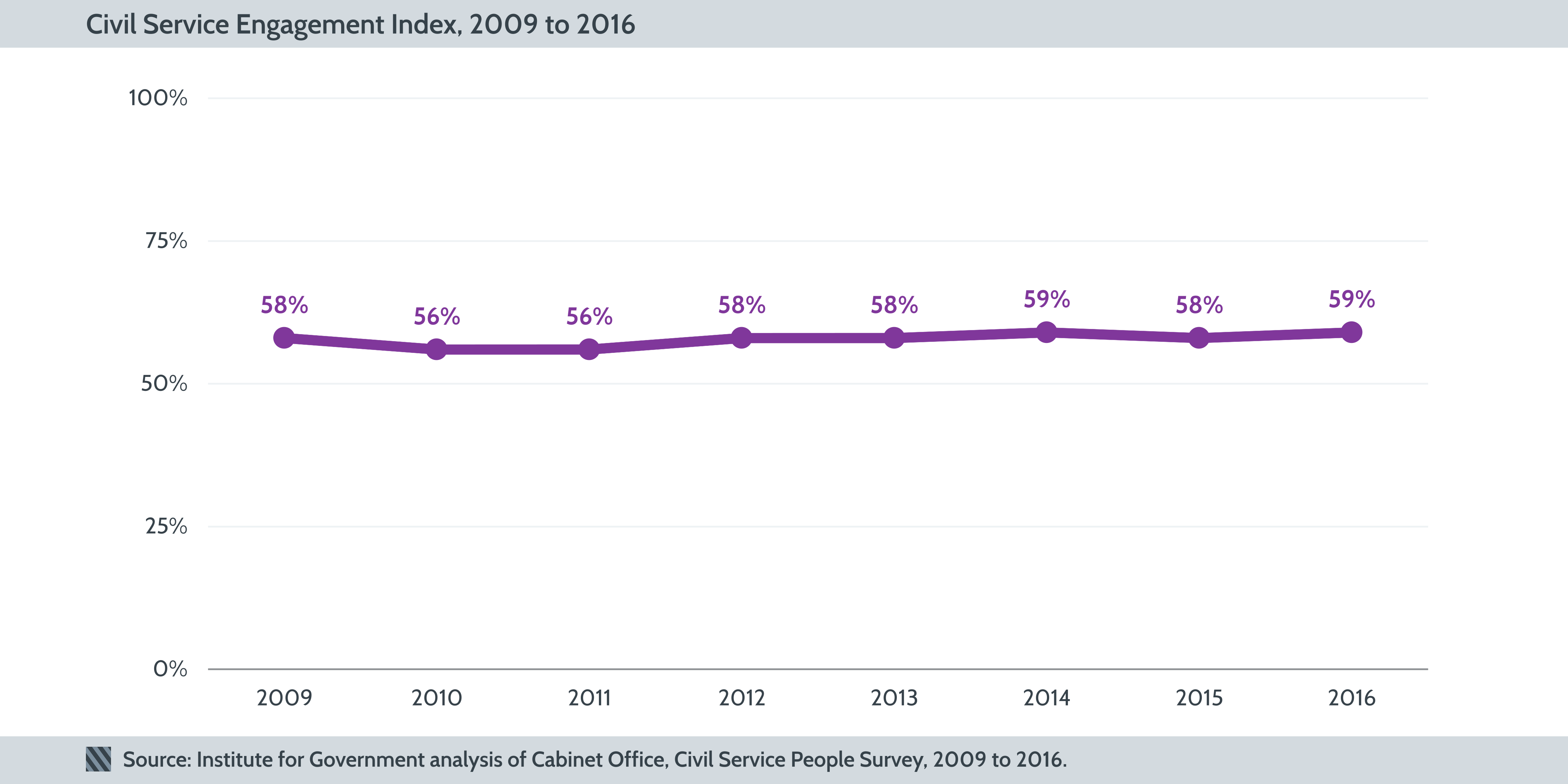
Although this doesn’t look like the most exciting chart, it suggests that engagement across the whole Civil Service has remained steady despite the upheavals (a new government, Brexit) of the last few months. However, it’s only when we look at individual departments that we get a better sense of how civil servants feel.
The Treasury yet again tops this year’s Engagement Index, with the Department of Health bottom…
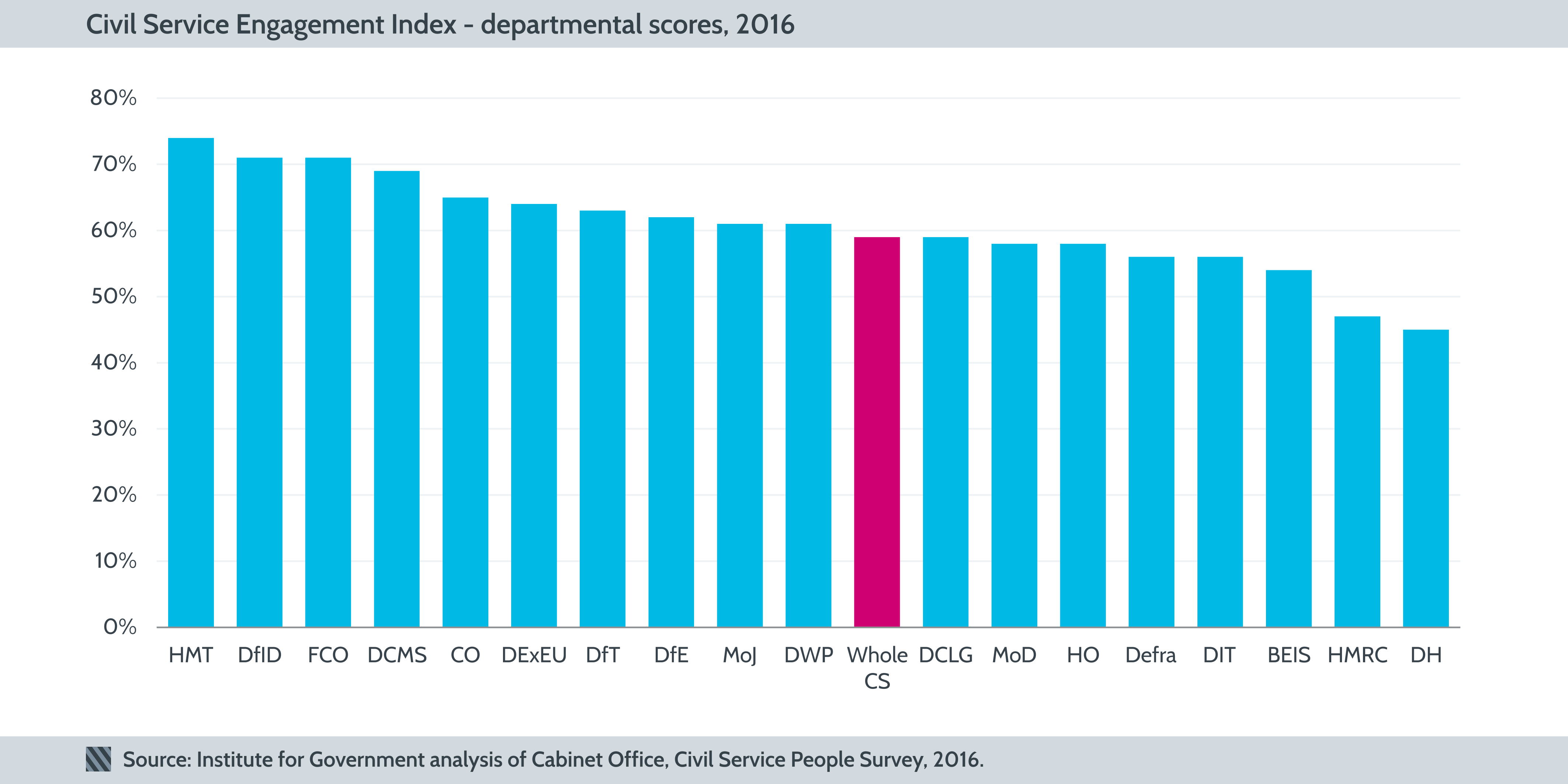
…and DH was the only department where the Engagement Index fell.
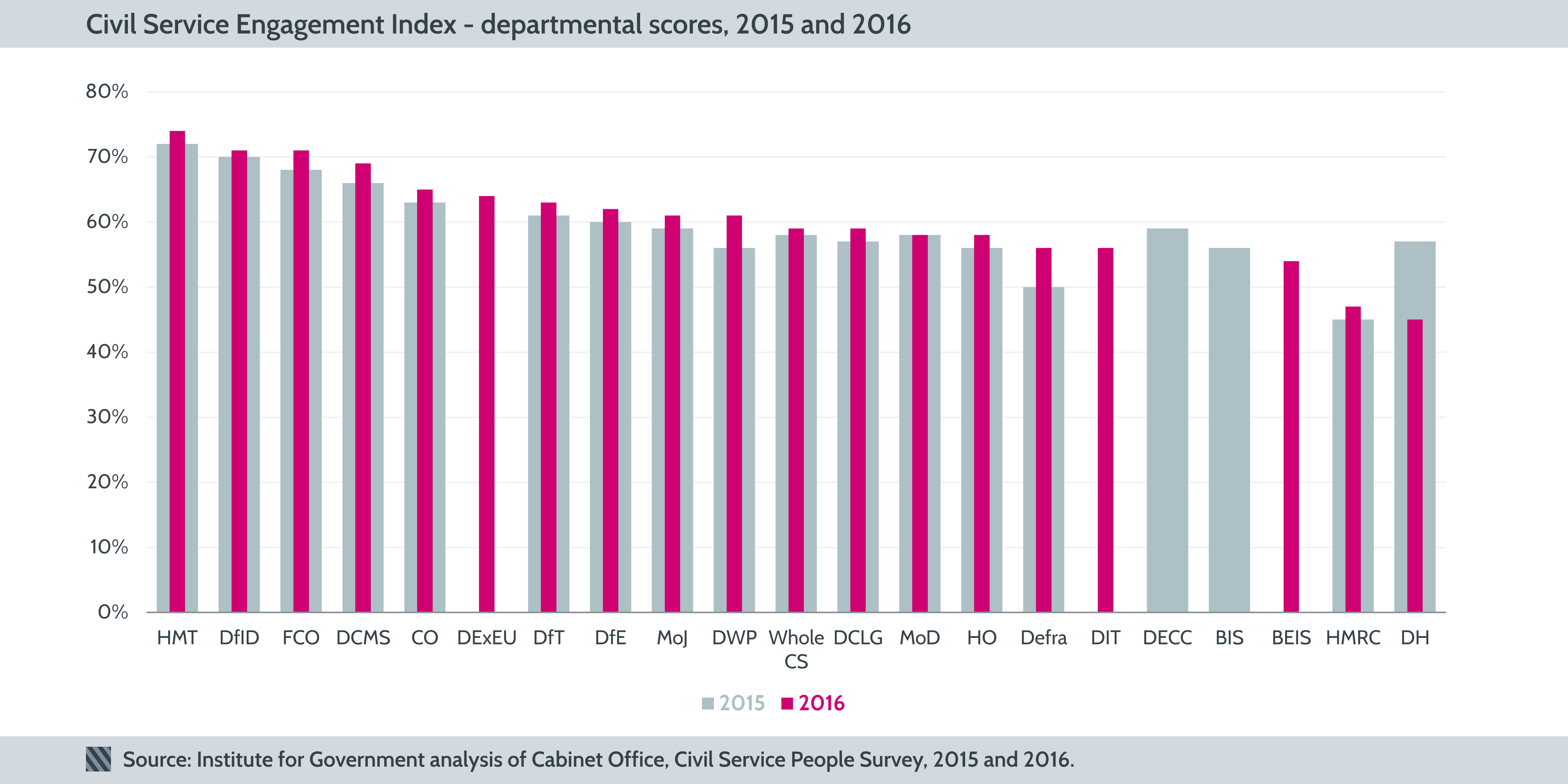
Across most of Whitehall, civil servants are more engaged in 2016 than in 2015: the biggest climbers were Defra (6 points) and DWP (5 points), while HMRC continues its climb from a low of 34% in 2010 to 47% in 2016. (Of the new departments, BEIS (54%) has a lower score than either of its predecessor departments, DECC and BIS, DExEU a respectable 64% and DIT a few points behind the whole Civil Service score on 56%.)
But the biggest change is at DH, where engagement has fallen by 12 points over the last year, the largest year-on-year fall for any department, ever. Within the questions used to calculate the Index, there has been a twenty point fall in those agreeing or strongly agreeing they would recommend the department as a good place to work (down to 24%) and fifteen point falls in those proud to tell others they work for DH (41%) and inspired to do the best in their job (25%).
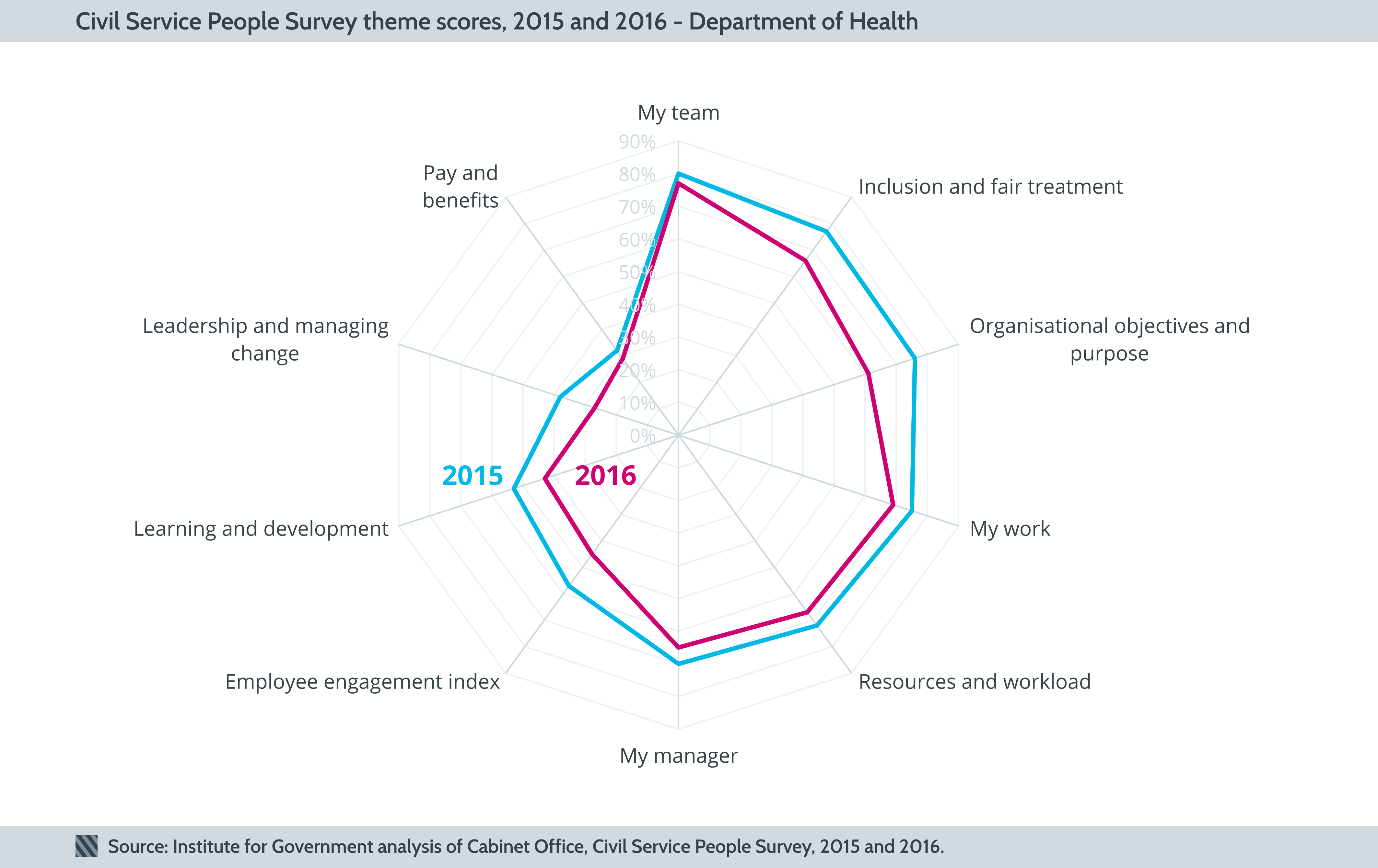
DH’s scores have fallen across all the themes in the survey since 2015, with the biggest fall being in the ‘organisational objectives and purpose’ theme (from 76% to 61%). (The response rate has also fallen, from 80% of employees responding to 67%.)
These falls may owe something to a recently-completed redundancy round. They are not irreversible; DCMS and DfE have both recovered in similar situations.
Departments vary on subjects like pay and leadership, with the Treasury topping the most categories...
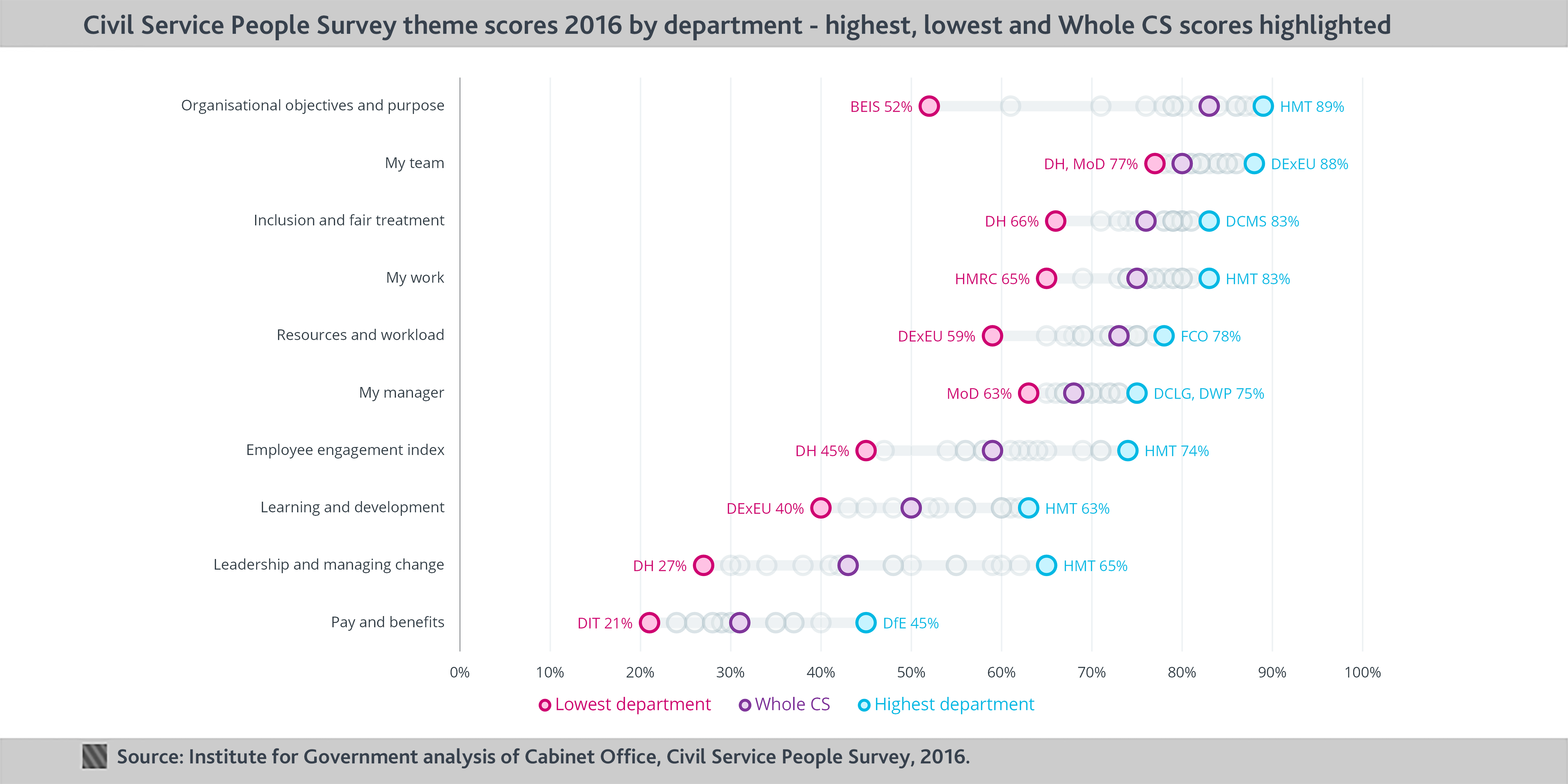
38 points separate the best (HMT) and worst (DH) performers on leadership and managing change, and 37 points on organisational objectives and purpose (HMT again, BEIS). The Treasury has the highest scores on five themes (objectives/purpose, my work, the Engagement Index, L&D and leadership and managing change).
BEIS has a score of just 52% on organisational objectives and purpose, nine points behind the second-lowest scorer (DH). Interestingly, DfE – which was also affected by machinery of government changes, taking over higher education from the old BIS department – scores 82% on that theme, four down on last year.
Pay and benefits is (indeed, remains) the lowest scoring theme across the whole Civil Service, with satisfaction at DfE five points above anyone else.
…with the new Brexit departments – DIT and DExEU – facing their own particular challenges.
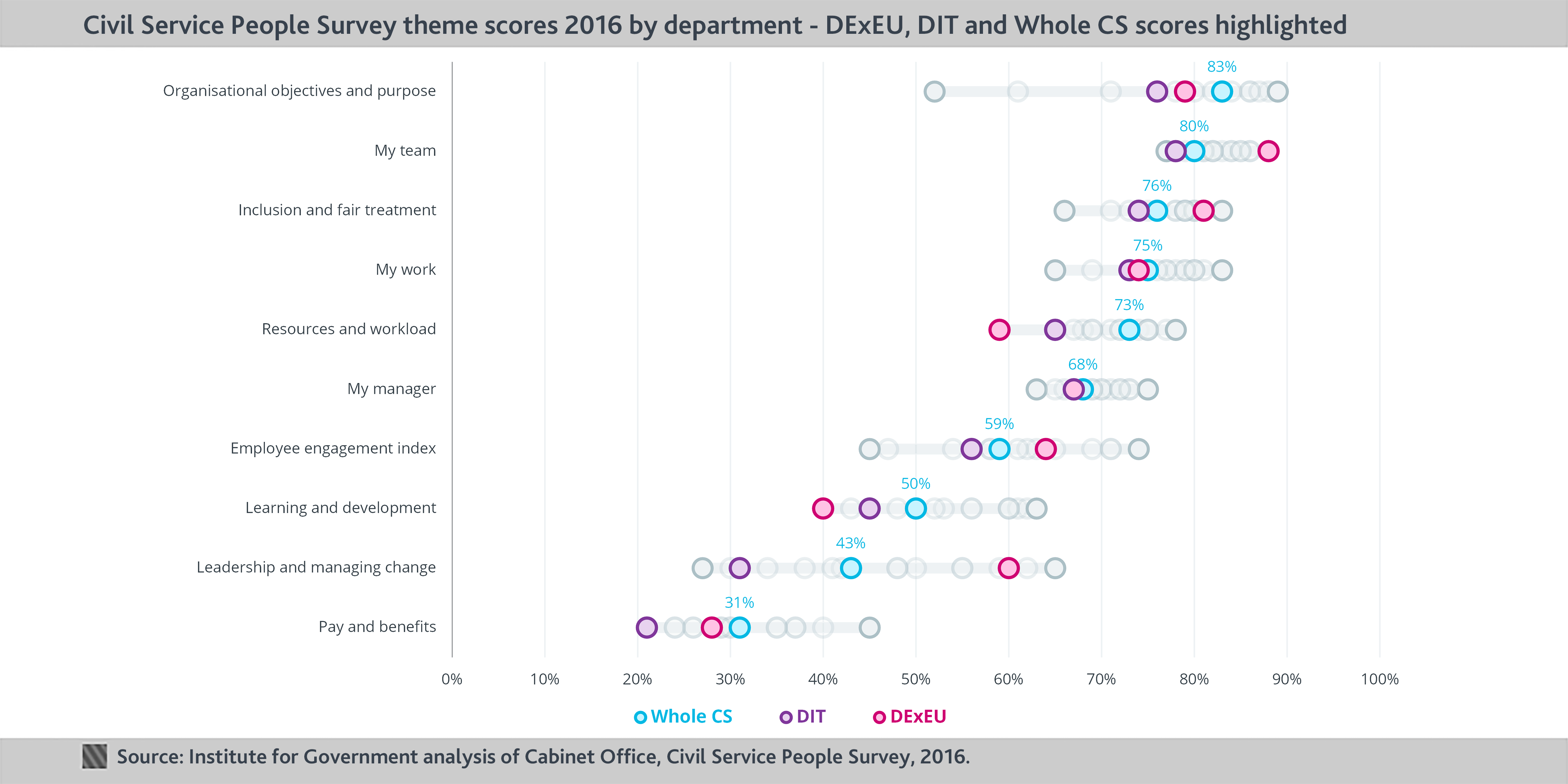
Of the two new Brexit-focused departments, DExEU outscores DIT on seven of the ten engagement themes. Indeed, it compares well with the Civil Service as a whole. It is the highest-scoring department on ‘my team’ (88%) and one of the highest-scoring on ‘leadership and managing change’ (60%). On the other hand, it scores lowest of all on learning and development (40%, perhaps unsurprisingly as a brand new department with inevitable growing pains) and on resources and workload (59%). It is 37 points behind the Civil Service median on one of the resource/workload questions – on having clear work objectives (38% against 75%). Altogether, the People Survey suggests DExEU has done a good job in establishing itself and motivating its workforce; its management will now be concentrating on focusing the organisation on the task at hand.
While DIT is close to the median Civil Service score on a number of themes, it is the lowest scoring department of all on pay and benefits (21%), seven points behind DExEU, and is well behind on leadership and managing change (31%, 29 points behind DExEU).
This annual morale health-check is a valuable tool for civil service leaders to understand what they need to improve in their departments. But where Treasury is in rude health, the Department of Health has deteriorated rapidly, and some of the newer departments will need to keep particular areas under observation.
The Cabinet Office has published full results of this year's Civil Service People Survey. Previous Whitehall Monitor analysis of the People Survey is linked to from our microsite.
Abbreviations for government departments can be found here.
- Topic
- Civil service Brexit
- Keywords
- Civil servants
- Administration
- May government
- Department
- Cabinet Office
- Publisher
- Institute for Government